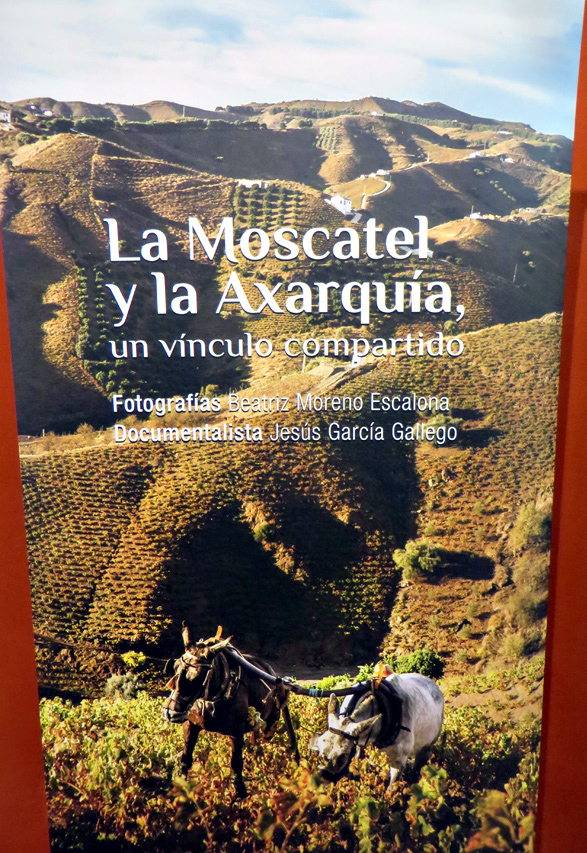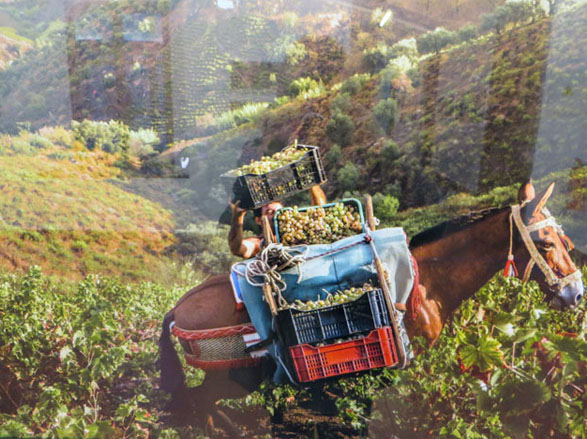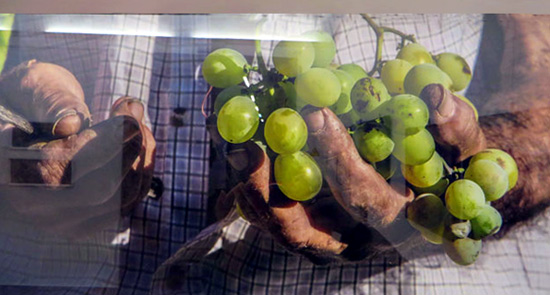Moscata, Moscatel, Muscat of Alexandria, Malaga Wine — there are many names for it. Originating in North Africa, it is a white wine grape of the muscat family. It is an ancient wine — one of the oldest genetically unmodified wines still in existence. Cleopatra drank it, ancient Greeks and Egyptians cultivated it, and ancient poets and bards celebrated it. In the 17th and 18th centuries Malaga Wine had become a booming industry. In the 19th Century during prosperous times in Malaga, the sweet Malaga wine was the favorite of English Victorian ladies, and the wine export trade became big business — which lasted until the plague of phylloxera decimated the industry.
I visited a photographic exhibit that depicted the process of cultivating and harvesting moscata grapes on the very steep hillsides of the Axarquia region, a mountainous inland area east of Malaga city. The name derives from an Arabic name for the region of Malaga. It is traditionally the land of wine and grapes, but now almonds, oil, citrus fruits, avocados, mangoes and other tropical fruits are also grown. With no terraces, grapes are harvested by hand with boxes and mules — the most labor-intensive process. The region also has a significant production of raisins, which can be seen in the many “passeros” or large drying beds where grapes are still dried in the sun and processed to be sold as Muscat raisins, as has been done for centuries. I bought my Muscat raisins in the market in Malaga, along with figs and fresh roasted Marcona almonds.
Axarquia is a lovely region, with its white villages surrounded by unspoiled countryside, its stunning beaches along the coast, and its glorious sub-tropical climate. It has traditionally been the land of wine and grapes, but it is now also known for almonds, oil, citrus fruits, avocados, mangos and other tropical fruits. It is also on the map for tourism, thanks to the delightful rural/trekking/wine and culinary tourism that has developed here, alongside communities of mostly European expats.







